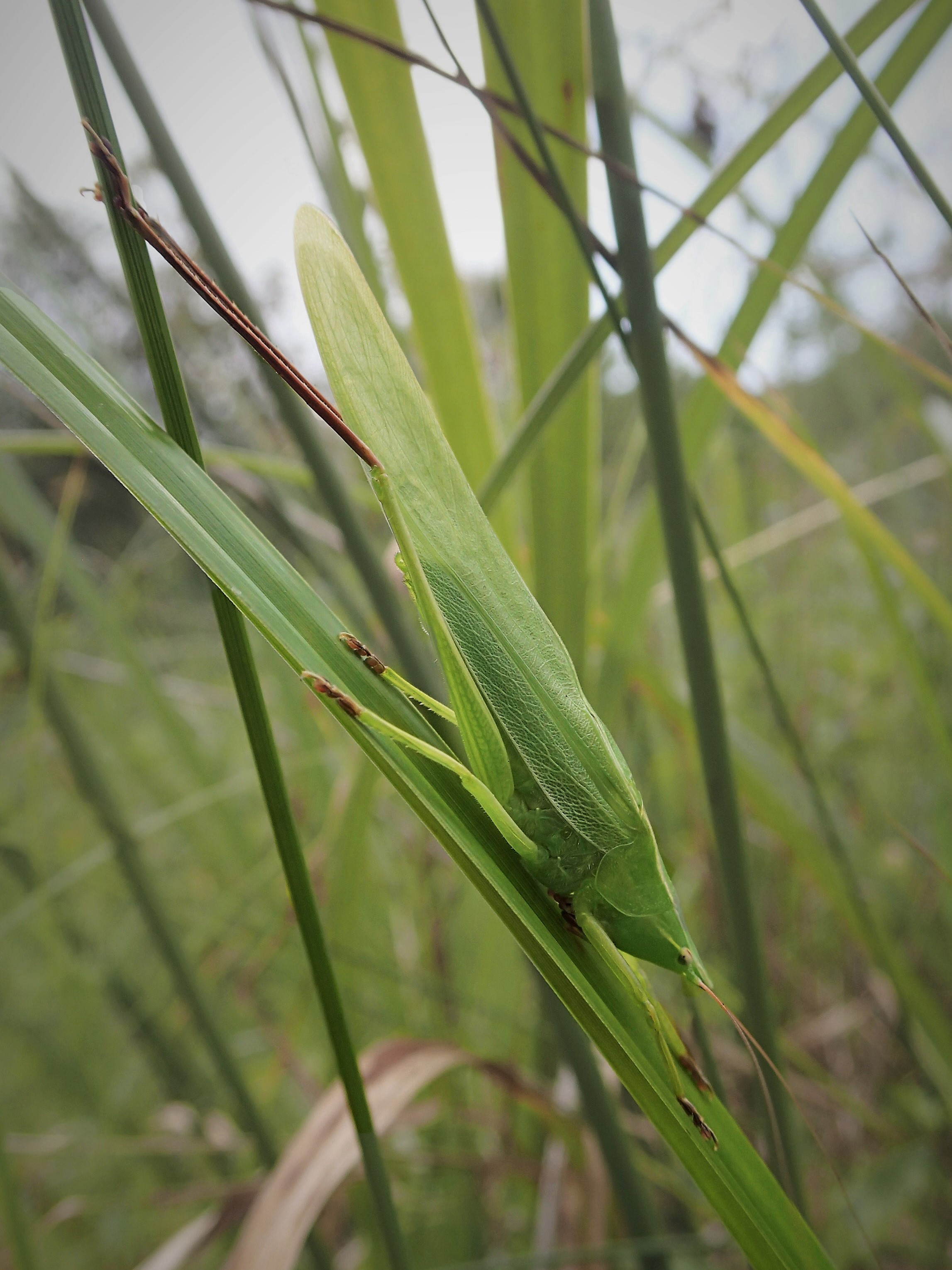If it’s not a leaf and it’s not a grasshopper, what is it?
This conical-faced insect is a sword-bearing conehead (Neoconocephalus ensiger). Coneheads belong to the katydid (Tettigoniidae) family, can come in green or brown forms, and resemble vegetation as a means of camouflage. In the photos below, notice how the wings and head resemble grass while the long hind legs resemble twigs or dead stalks. Green color variants are a fresh, unmarked leafy green while brown color variants are speckled with black like decaying vegetation.
Sword-bearing coneheads are so named for their females’ long, sword-shaped ovipositor, which extends far beyond her wings. This particular individual is a male, whose song is produced by rubbing his right forewing (plectrum) across a set of teeth on the underside of his left forewing. Males can be heard singing through the night from July to September. On cooler nights, males synchronize their singing.
Different conehead species can be distinguished by their songs as well as the black markings on the tip of their cones. Sword-bearing coneheads sing a raspy tst-tst-tst song at 10 notes per second and don a moustache-like black stripe across the tip of their cone.
Coneheads can be found in the tall grasses of moist meadows, and their unique mouthparts are suitable for feeding on the seeds of these grasses. During the day, coneheads remain still in a head-down position in the vegetation and can be very difficult to spot.
Keep an eye - and an ear - out for awe-inspiring things that may be hidden in plain sight all around you!
Green color variant of the male sword-bearing conehead.
The black stripe across the tip of his cone signifies that this is a sword-bearing conehead.
The berry-colored mouthparts of these coneheads are designed for eating seeds of grasses.
During the day, coneheads remain still in a head-down position.












